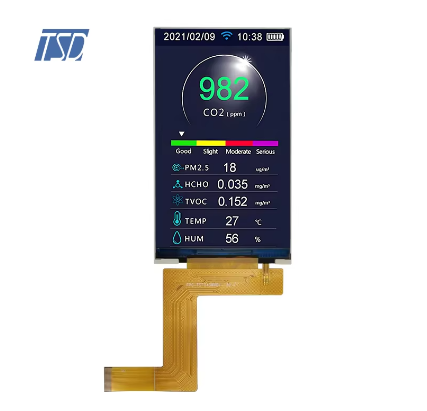Understanding LCD Display Modules in Embedded Systems
Defining LCD Display Modules and Their Role
LCD display modules form a key part of many embedded systems, acting as the main window for showing information and letting people interact with devices. Most of these modules contain liquid crystal displays capable of displaying everything from basic text characters to full color graphics. The displays basically serve as the bridge between machines and humans, allowing operators to see what's happening inside complex systems. We find these displays everywhere nowadays - in our phones, microwave ovens, even medical equipment where accuracy matters most. With each passing year, manufacturers keep finding new ways to expand what these screens can do. The result? LCD technology has become pretty much essential across all sorts of industries, from consumer gadgets to heavy industrial machinery.
Key Components: Controllers, Interfaces, and Drivers
An LCD module actually has three main parts working together behind the scenes controllers, interfaces, and drivers. Take the HD44780 controller for example this little chip is specifically made for showing characters on screens, so when we want to display text it just needs basic instructions to get things going. Then there are those interface options like I2C and SPI connections that let our LCD talk to the microcontroller without any hiccups during data transfers. What happens here? Well, basically the controller handles all the data processing stuff, the interfaces keep everything talking smoothly between components, and finally the drivers take care of making what appears on the actual screen look right. Because all these pieces fit together so well, LCDs can be used pretty much anywhere from industrial equipment displays to consumer electronics where space matters but readability counts even more.
Why LCD Modules Matter for User Interaction
LCD modules make a big difference in how users interact with devices because they offer easy-to-use and attractive visual interfaces. Companies that switch to these advanced display technologies tend to see better results when it comes to keeping people engaged with their products. Industry research shows something interesting too: systems with interactive LCD screens often get about 30 percent more positive feedback from users and work more efficiently overall. Take a look at what's happening in the market right now. Smartphone manufacturers are pushing boundaries with their screen technology while factories rely on complex control panels that use graphics to break down complicated processes. The way businesses keep adopting LCD tech across different sectors just goes to show how important these displays have become for making interactions between humans and machines smoother and more effective.
Character vs. Graphic LCDs: Use Cases Compared
In the world of embedded systems, character and graphic LCDs each have their own niche roles. Character LCDs basically show standard text characters, so they work great for simple displays where just showing numbers or short messages matters most. Think calculators, basic status indicators, stuff like that. These screens tend to be budget friendly and pretty straightforward to get working. Graphic LCDs tell a different story though. They can actually draw detailed pictures and complex graphics, something that becomes really important when an application needs lots of visual information. Handheld games, control panels with all sorts of icons and symbols these are the kinds of places where graphic LCDs shine. The choice really comes down to what kind of visuals the project needs. A run-of-the-mill thermostat probably gets by fine with a character display, but imagine trying to operate a medical device without clear graphical representations it just wouldn't cut it.
Industrial-Grade Near Eye Display (NED) Modules
Industrial grade Near Eye Display or NED modules are built to handle tough situations without breaking down. These devices stand up pretty well against things that would destroy regular tech, like super hot or cold temps, water exposure, and physical impacts that happen all the time on factory floors. That kind of toughness explains why so many manufacturers, plane makers, and defense contractors rely on them when failure just isn't an option. Take auto plants for example, workers wear AR glasses with NED tech to check car parts during assembly. The displays let them see tiny details they might miss otherwise, cutting down errors and speeding up production lines significantly.
Touchscreen LCDs: Bridging Usability and Functionality
Touchscreen LCD displays really make things easier for people because they let us interact with gadgets in such an intuitive way. As capacitive touch tech has improved over time, these screens can now handle multiple touches at once while responding quickly to our inputs, which makes them super useful across all sorts of modern devices. From phones we carry around daily to big machines used in factories, touchscreens eliminate the need for extra buttons or controllers. Take car dashboards as one good example. Many newer vehicles have large touch panels where drivers can adjust maps, music playlists, and even temperature controls right from the screen itself instead of hunting through physical knobs and switches. Research indicates that when products feature touch interfaces, users tend to engage with them about 50 percent more than traditional setups simply because touching feels more natural and straightforward compared to pressing tiny keys or flipping through menus.
Hardware Requirements: Pins, Timing, and Power
When putting together LCD modules with microcontrollers, it really helps to know what hardware specs matter most. The main things to watch out for are those pin configurations that make sure everything connects properly electrically, plus getting the timing right so the components talk to each other consistently. Power management is another big deal because LCD screens generally need pretty stable power to work well. Space limitations and different project requirements mean microcontrollers don't always need every single pin on an LCD module. That's where tricks like running in 4-bit mode come in handy, cutting down on required pins while still keeping full functionality intact. Getting all these pieces to work together smoothly makes for better integration between the LCD display and the microcontroller, which ultimately means the whole system runs much more reliably.
Software Commands: Addressing Registers and Memory
Software commands controlling LCD modules play a key role when integrating them with microcontrollers. The way registers get addressed and how memory maps work basically determines what gets shown on screen. Most systems rely on standard protocols like I2C or SPI for talking between different parts of the hardware setup. When writing firmware for microcontrollers, programmers need to include certain command sequences to manage the display properly. Things like moving the cursor around, putting characters on the screen, or wiping it clean all require specific instructions. Looking at actual code examples really helps developers understand how these protocols function in practice. Taking this thorough approach makes sure the LCD works exactly right inside whatever embedded system it's part of.
Optimizing Performance: Reducing Pins and Managing Delays
Getting better performance out of LCDs connected to microcontrollers means looking at things like reducing the number of pins used and handling those pesky delays properly. One common trick is switching to interface modes that need fewer pins, which makes life easier when working on boards where every pin counts. And let's face it, most projects these days are fighting for space on those tiny chips. Delay management matters too because nobody wants a laggy display. People notice when screens respond slowly, and that just ruins the whole experience. Smart developers often implement non-blocking delay routines instead of the old fashioned wait commands. This keeps everything running smoothly while still giving the display what it needs. We've seen this work wonders in actual products from smart watches to industrial control panels, showing just how important these little optimizations are for making embedded systems that actually work well in practice.
High-Resolution Displays and Brightness Optimization
High resolution LCD displays have really changed how people interact with screens in all sorts of settings. These displays come in many sizes now, starting at around 128 x 64 pixels and going all the way up to Full HD 1920 x 1080 resolutions from companies like Innolux and Kyocera. The picture quality is just so much better than older models, with sharper details and richer colors that make everything look more lifelike. Manufacturers have also gotten pretty good at making sure these screens stay readable no matter where they're used. They do this through things like LED backlighting systems and smart brightness adjustments that automatically tweak the screen based on ambient light levels, even when someone's outside in bright sunshine. People actually notice the difference too. When users can see what's on screen without squinting or adjusting angles constantly, they tend to be happier with their devices overall. That matters a lot for both regular consumers buying smartphones and tablets, as well as businesses relying on durable displays for machinery and control panels.
Optical Innovations: Birdbath, Pancake, and Waveguide
The latest developments in optical tech like birdbath, pancake lenses, and waveguides are really changing how LCD displays perform these days. These new approaches fix some old problems with screens getting washed out in bright light and having poor visibility from certain angles. That's why we're seeing them pop up everywhere now from smartwatches to car dashboards. Take waveguide tech specifically it basically lets people see what's on screen from almost any direction without losing clarity. Industry insiders think this kind of optical innovation is going to be all over next generation embedded systems soon. Manufacturers want displays that work better in real world conditions where lighting changes constantly and users interact with screens in unpredictable ways.
Future Trends: AI Integration and Energy Efficiency
Bringing AI together with LCD tech is changing how people interact with screens. Smart algorithms adjust display settings based on what users want and their surroundings, making interfaces feel more personalized than ever before. Looking ahead, manufacturers are working hard to make these LCD components work better while using less electricity. Take those TFT displays for instance they really cut down on power consumption which matters a lot for gadgets we carry around all day. Market research shows companies want LCD panels that pack both smart features and low energy usage. This combo makes sense for businesses trying to stay competitive while also meeting green standards across different industries.
FAQ
What are LCD Display Modules?
LCD Display Modules are components used in embedded systems to display data visually, ranging from simple text to detailed graphics.
How do LCD modules enhance user interaction?
They offer intuitive interfaces, which improve user satisfaction and efficiency by up to 30% through interactive and visually appealing displays.
What are the main components of an LCD module?
Controllers, interfaces like I2C and SPI, and drivers that together ensure functionality, efficiency, and data visualization on the screen.
What's the difference between Character and Graphic LCDs?
Character LCDs display simple text, whereas Graphic LCDs render complex images, benefiting applications requiring detailed visuals.
Why are Near Eye Display (NED) modules important?
They are durable and reliable in industrial environments, essential for applications like manufacturing and military where performance under harsh conditions is crucial.
Table of Contents
-
Understanding LCD Display Modules in Embedded Systems
- Defining LCD Display Modules and Their Role
- Key Components: Controllers, Interfaces, and Drivers
- Why LCD Modules Matter for User Interaction
- Character vs. Graphic LCDs: Use Cases Compared
- Industrial-Grade Near Eye Display (NED) Modules
- Touchscreen LCDs: Bridging Usability and Functionality
- Hardware Requirements: Pins, Timing, and Power
- Software Commands: Addressing Registers and Memory
- Optimizing Performance: Reducing Pins and Managing Delays
- High-Resolution Displays and Brightness Optimization
- Optical Innovations: Birdbath, Pancake, and Waveguide
- Future Trends: AI Integration and Energy Efficiency
- FAQ




